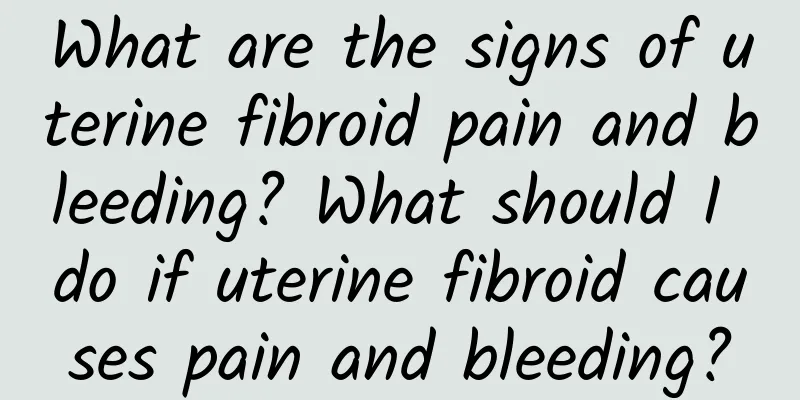What are the signs of uterine fibroid pain and bleeding? What should I do if uterine fibroid causes pain and bleeding?

|
What are the signs of uterine fibroid pain and bleeding? What should I do if uterine fibroid causes pain and bleeding? introduction Uterine fibroids are common benign tumors in women that usually appear in the lining or myometrium of the uterus. Although most uterine fibroids are asymptomatic, some may cause pain and bleeding. This article will discuss the signs and treatment of pain and bleeding caused by uterine fibroids. What are uterine fibroids? Uterine fibroids are tumors that grow in the lining or myometrium of the uterus and are usually benign. Uterine fibroids can range in size from as small as a peanut to as large as a basketball. Most uterine fibroids cause no symptoms, but a few cause pain and bleeding. What is the sign of pain? Uterine fibroids can cause varying degrees of pain. The pain may be constant or intermittent and may get worse or less severe. The intensity and area of pain will vary depending on the location and size of the fibroids. Some patients may experience tenderness in the abdomen or pelvic area, while others may experience pain in the vaginal or rectal area. What are the signs of bleeding? In addition to pain, uterine fibroids may cause abnormal bleeding. Bleeding may occur outside of your menstrual cycle, or your menstrual flow may be unusually heavy. Sometimes, bleeding may cause anemia, which is caused by excessive blood loss. In addition to abnormal menstrual cycles, uterine fibroids may cause your periods to become shorter, your bleeding to last longer, or your bleeding to become more frequent. What should I do if uterine fibroids cause pain and bleeding? When you find yourself with the above symptoms, the first step should be to see a gynecologist as soon as possible. The gynecologist can confirm the presence of uterine fibroids through physical examination and related examinations. Commonly used examination methods include B-ultrasound, MRI, intrauterine ultrasound and transcervical biopsy. Treatment options depend on the size and number of fibroids, the symptoms they cause, and the patient's age. For patients with no symptoms or mild symptoms, observation is usually the right approach. For patients with pain and bleeding, medications such as nonsteroidal anti-inflammatory drugs and oral contraceptives may be necessary. For patients with severe pain and bleeding, surgery may be necessary, including a hysterectomy or myomectomy. Summarize Although most uterine fibroids are asymptomatic, some patients may experience signs of pain and bleeding. The pain may be constant or intermittent, while bleeding may occur outside of the menstrual cycle and be abnormally heavy. When these signs occur, it is crucial to see a gynecologist promptly. The gynecologist can develop an appropriate treatment plan for the patient based on the examination results, which may include observation, medication, or surgical removal. With timely treatment and management, symptoms can be relieved and quality of life can be improved. |
Recommend
Are the symptoms of pregnancy and uterine fibroids similar?
Are the early symptoms of pregnancy similar to th...
Experts explain the common causes of vulvar leukoplakia
It is very beneficial for the majority of female ...
What are the causes of ovarian cysts?
With the rapid development of society, the respon...
Can a bad mood cause women to suffer from menstrual irregularities?
It seems that irregular menstruation is now a com...
What to do if Bartholinitis occurs
Bartholinitis is a gynecological inflammation cau...
End the belly! Keep your belly oil-free and worry-free
Do all girls have a "small belly"? Do y...
How to prevent threatened miscarriage
Threatened abortion is very harmful to women'...
Common and easily identifiable manifestations of vaginitis
Although vaginitis is a common gynecological dise...
What is the best food to eat when you have uterine fibroids?
Having uterine fibroids is a confusing and distre...
What harm will painless abortion bring to women?
With the development of today's society, abor...
Can I take cold medicine if I catch a cold after an abortion? I must eat like this after an abortion.
Although abortion is only a minor operation, the ...
Analyze the common causes of adnexitis
Adnexitis is a gynecological disease that causes ...
Can sweat-inducing soup help you lose weight? Helps increase basal metabolic rate
The weather has been getting colder recently, and...
How long is the best time to rest after abortion?
The amount of time you need to rest after an abor...
Abdominal obesity! Higher risk of metabolic syndrome
As the weather gets warmer, people on the streets...









